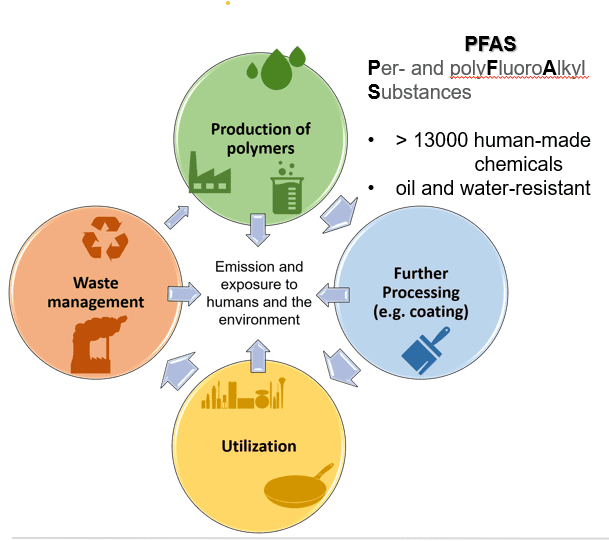
A&WMA Conference on the Science of PFAS Reveals Immediate Need
A&WMA Conference on the Science of PFAS Reveals Immediate Need for Testing and Treatment Techniques
Durham, NC November 10, 2022
EPA officials, scientists, engineers, water utility staff, land fill professionals and manufacturing company representatives gathered to discuss the imminent health advisories to be issued for maximum contaminant levels in water, air and soil containing PFAS “forever chemicals.”
Many case studies were presented of how the pollutants have entered the environment and their measurable impact on public health. The PFAS Life Cycle model, created by the EPA, was referenced by several speakers to demonstrate the need for prevention of new sources of PFAS, and testing and treatment of existing PFAS in all its forms as a public health concern.
The specific challenges presented in economically disadvantaged and remote locations using septic systems or non-municipal water and waste treatment centers, such as tribal lands were also discussed.
Monitoring and compliance in the state of no legislative rules was expressed by the EPA as the desire to “hold polluters accountable”. Labeling PFAS as a hazardous waste element could change this dramatically. Manufacturing companies are beginning to mark their products with messages indicating they are PFAS Free in anticipation of EPA health advisories which will create increasing consumer concern. The need for a certification program to ensure the validity of these claims is recognized by cooperating agencies of the federal government, including the FDA.
Chemours showed their Cape Fear River thermal oxidation treatment facility as an example of the method they are using to eliminate PFAS from their manufacturing process. Other treatment methods are under scientific review.
Dr. Philip Taylor shared the history of thermal destruction of PFAS and the results of his collaborative research in this area. As a leading combustion scientist, he stressed important details of time, temperature, turbulence, and hydrogen content in the destruction process. The EPA has adopted his incinerabilityindex as their standard since the late 1990s and his new findings are being incorporated into their evolving methods of treatment. Dr. Taylor is mentoring scientists from around the world who are studying applications of thermal destruction of PFAS.
Making these testing and treatment techniques practical for all phases of the PFAS life cycle is a key opportunity to directly improve the state of the environment and its long-term public health and safety.
